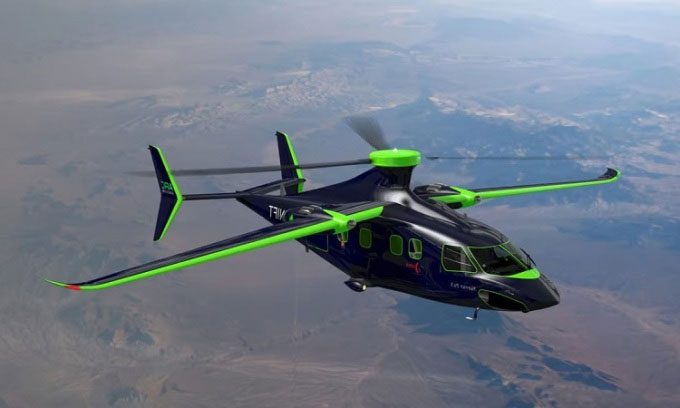Arc Aero Systems has introduced the Linx P9 hybrid aircraft, which promises to outperform comparable helicopters in terms of range, speed, and operational costs.

Design of the 9-seat hybrid aircraft by Arc Aero Systems. (Photo: Arc Aero Systems).
The Linx P9 features a frame that integrates elements from airplanes, helicopters, and rotorcraft with freely rotating rotors. This composite design weighs only 1,930 kg when empty. The Linx P9 has a 9-seat cabin, primary wings measuring 12.6 meters in length, a pair of 2-meter push propellers extending from the rear, and a large tail, as reported by New Atlas on January 23.
The large 13-meter rotor can adjust its angle of rotation. The Linx P9 operates with an electric motor, enabling the upper rotor to spin fast enough for vertical takeoff and landing. Once airborne, the push propellers engage, providing over 90% of the lift, allowing the rotor to slow down. This design helps reduce drag and mitigate asymmetric lift. As a result, the aircraft can achieve a maximum cruise speed of 370 km/h.
The push propellers are powered by a 496-horsepower turbo engine. According to the company, these engines run on sustainable aviation fuel and can be replaced with hydrogen fuel cells. The size and speed of the Linx P9 make it more suitable for regional routes rather than short city flights. Arc Aero Systems states that the aircraft has a standard range of 950 km with a fuel consumption of 600 kg, or 1,300 km when an additional fuel tank is installed.
The operational cost of the Linx P9 is approximately $505 per flight hour, which is a 40% reduction compared to similar-sized helicopters. The aircraft has two key advantages over most current electric vertical takeoff and landing (eVTOL) taxi designs. First, the large rotor can function like a parachute in the event of a malfunction, allowing the aircraft to auto-rotate for a safe landing. Second, the vehicle is designed to comply with existing regulations, meaning it does not require lawmakers to draft new licensing procedures.


















































